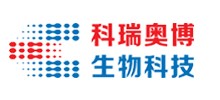| 货号 | MAB247-500 |
| 别名 | IL-15MGC9721; interleukin 15; interleukin-15 | 全称 | Interleukin 15 |
| 反应种属 | Human |
| 应用 | Western Blot(1 µg/mL) |
| 目标/特异性 | Detects human IL-15 in Western blots. In Western blots, no cross-reactivity with recombinant human IL‑2 is observed. |
| 使用方法 | Western Blot: 1 µg/mL Neutralization: Measured by its ability to neutralize IL‑15-induced proliferation in the MO7e human megakaryocytic leukemic cell line. Avanzi, G. et al. (1988) Br. J. Haematol. 69:359. The Neutralization Dose (ND50) is typically 0.007-0.042 µg/mL in the presence of 10 ng/mL Recombinant Human IL‑15. |
| 来源 | Monoclonal Mouse IgG1 Clone # 34593 |
| 产品组分 |
| 供应商 | R&D Systems |
| Entrez Gene IDs | 3600 (Human); 16168 (Mouse); 25670 (Rat); 493682 (Feline) |
| 应用文献 | |
| R&D Systems personnel manually curate a database that contains references using R&D Systems products. The data collected includes not only links to publications in PubMed, but also provides information about sample types, species, and experimental conditions. Targeting the binding interface on a shared receptor subunit of a cytokine family enables the inhibition of multiple member cytokines with selectable target spectrum. | |
| 纯化方式 | Protein A or G purified from ascites |
| 免疫原 | E. coli-derived recombinant human IL-15 Asn49-Ser162 Accession # P40933 |
| 内毒素水平 | <0.10 EU per 1 μg of the antibody by the LAL method. |
| 生物活性 | Human |
| 标记 | Unconjugated |
| 溶解方法 | Reconstitute at 0.5 mg/mL in sterile PBS. |
| 背景 | Interleukin 15 (IL-15) is a widely expressed 14 kDa cytokine that is structurally and functionally related to IL-2 (1-3). Mature human IL-15 shares 70% amino acid sequence identity with mouse and rat IL-15. Alternate splicing generates isoforms of IL-15 with either a long or short signal peptide (LSP or SSP), and the SSP isoform is retained intracellularly (4). IL-15 binds with high affinity to IL-15 R alpha (5). It binds with lower affinity to a complex of IL-2 R beta and the common gamma chain ( gamma c) which are also subunits of the IL-2 receptor complex (1, 6). IL-15 associates with IL-15 R alpha in the endoplasmic reticulum, and this complex is expressed on the cell surface (7, 8). The dominant mechanism of IL-15 action is known as transpresentation in which IL-15 and IL-15 R alpha are coordinately expressed on the surface of one cell and interact with complexes of IL-2 R beta / gamma c on adjacent cells (9). This enables cells to respond to IL-15 even if they do not express IL-15 R alpha (8, 10). Soluble IL-15-binding forms of IL-15 R alpha can be generated by proteolytic shedding or alternate splicing (11-13). These molecules retain the ability to bind tightly to IL-15 and can either inhibit or augment IL-15 function (5, 12, 13). Consistent with its shared use of IL-2 receptor subunits, IL-15 induces IL-2-like effects in lymphocyte development and homeostasis (3). It is particularly important for the maintenance and activation of NK cells and CD8+ memory T cells (3). IL-15 also exerts pleiotropic effects on other hematopoietic cells and non-immune cells (2). Ligation of membrane-associated IL-15/IL-15 R alpha complexes induces reverse signaling that promotes cellular adhesion, tyrosine phosphorylation of intracellular proteins, and cytokine secretion by the IL-15/IL-15 R alpha expressing cells (14, 15). |
| 运输条件 | Blue Ice |
| 存放说明 | -20℃ |
| 参考文献 |
|
Cell Proliferation Induced by IL‑15 and Neutralization by Human IL‑15 Antibody. Recombinant Human IL‑15 (Catalog # 247-ILB) stimulates proliferation in the MO7e human megakaryocytic leukemic cell line in a dose-dependent manner (orange line) as measured by Resazurin (Catalog # AR002). Proliferation elicited by Recombinant Human IL‑15 (10 ng/mL) is neutralized (green line) by increasing concentrations of Mouse Anti-Human IL‑15 Monoclonal Antibody (Catalog # MAB247). The ND50 is typically 0.007-0.042 µg/mL. |


